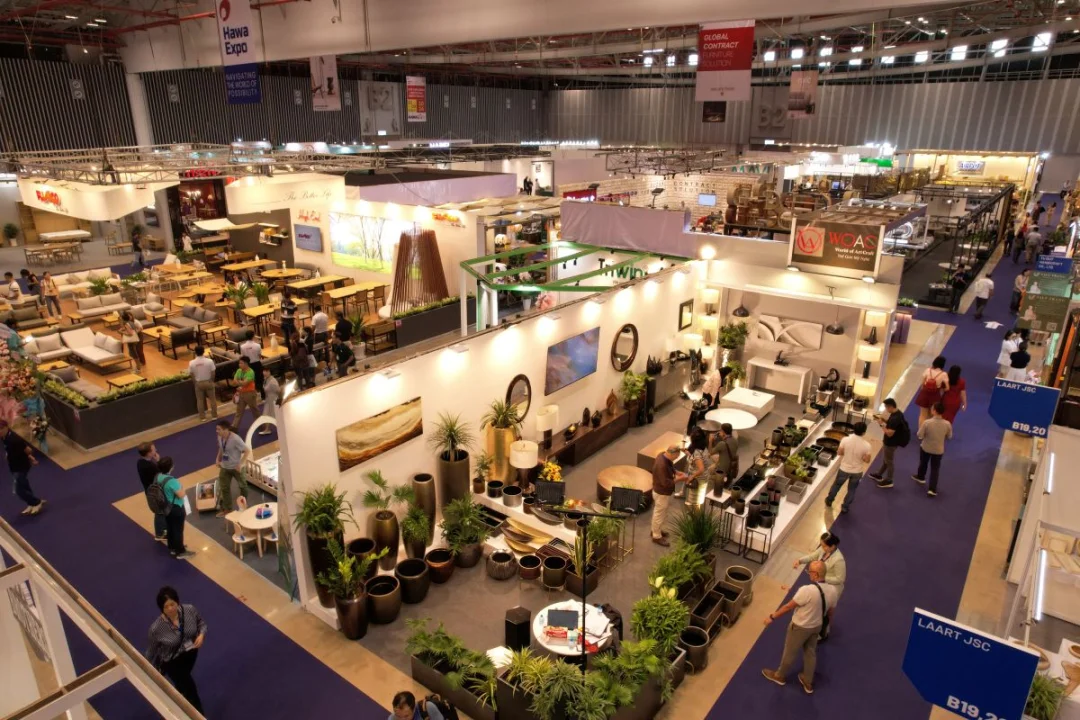For many people in or working closely with the furniture industry today, it is hard to believe that Ashley Furniture's "rocket ship" was actually designed by two founders with a pickup truck, a bit of ambition, and a dream. Ashley Furniture Industries, currently recognized as the largest furniture company in the world thanks to a growth rate of 6-8% in a $100 billion industry, holds nearly 29% of the U.S. market share in terms of bedding and furniture. Additionally, the company earns approximately 30% of its revenue from furniture imports. These milestones follow Ashley Furniture's title of being one of the largest privately owned companies in the United States.
This paper seeks to answer a fundamental question: What has led to Ashley Furniture's monumental growth? It is imperative to note that from the moment of inception, Ronald G. Wanek, Co-Founder and Chairman, and Todd Wanek, CEO and President, established fair and simple guiding principles for the company, establishing that "success in business is impossible...unless the endeavor is pursued and successfully completed with 'value' being placed first...ahead of all other aspirations." Indeed, the company implemented these principles to improve operations and market share, ultimately capturing nearly 24% of national share in furniture. It is from this context and vision that the following paper examines Ashley Furniture. This paper will first look at the evolution of Ashley, its unique position within an ever-evolving industry, and finally, why and how Ashley Furniture has and will continue to be successful.
History of Ashley Furniture
Ashley Furniture was founded in 1945 by Carlyle Weinberger in Chicago, IL. The company began as a sales organization with branches in Chicago, IL, Goshen, IN, and Ozone Park, Long Island, in the New York City metro area. The firm sold under the name of Ashley Furniture. The furniture was imported into the U.S. from overseas. The head of the organization grew the company with the intent and understanding that all the branches would one day be handed down through the Weinberger family. Starting in 1970, Ashley occasionally began offering its furniture at the Chicago Furniture Mart in downtown Chicago. During this time, there were few furniture manufacturers who were direct-to-consumer. The location in the Mart provided direct exposure to both retailers and the general public. Sometime in the early 1970s, Ashley introduced its “Showroom at Sea” program, which offered occasional cruises in the Caribbean, primarily to furniture retailers. The program was popular and only ended after the U.S. government banned corporate incentives via international travel abroad. At the point of absence for the “Showroom at Sea” program, Ashley introduced a large semi-annual event to the furniture industry called “Market” amusement park. Located in the same building as the Chicago Furniture Mart, this event provided all of the most recent furnishings, bedding, accessories, and a wide variety of entertainment, including industry-exclusive concerts of some of the day’s top country artists.
Market continued twice per year (winter and summer) in Chicago through 2001. In the fall of 1994, a second and third generation of Weinbergers implemented the new Ashley strategy, which included mass-market discounts, new product categories, and a novel major advertising campaign in order to build the furniture distribution business. In 2004, Ashley emerged as the largest home furnishings company in the United States. At that time, Weinberger closed the inflation wholesale part of Ashley Furniture in order to focus on manufacturing, importing, and distributing directly to customers on a retail investment. On September 20, 2006, Ashley was the first-ever company to surpass $1 billion in sales in the month of September and continues to be one of the largest furniture stores, stores of any kind, and major employers in the United States. In 2012, Ashley Furniture celebrated its 68th anniversary. With multiple manufacturing facilities in the United States, approximately 450 Ashley HomeStores dealers, and thousands of other stores selling Ashley products, we’re proud to have a production and distribution strategy supporting a flexible and efficient distribution network for our customers. With a cohesive marketing strategy to directly attract customers to buy from Ashley, we design, then make and sell furniture for every room in the house. Since 2000, we’ve created more than 80 million pieces of furniture, 50 million of them in the past five years alone.
Expansion and Global Presence
Expansion and Global Presence: As part of its strategic diversification plan, the company established Ashley Furniture HomeStores, a segment dedicated to domestic and inward expansion. The majority of Ashley Furniture’s stores are located within the United States. Additionally, the company has developed a strong presence in the South Pacific, Middle East, and Central America. This diverse, cross-continental presence brings an array of struggles and opportunities in the significant expansion and entrance into new markets. Many domestic brands have tried and failed to attract international consumers, as entering the international market can have an overwhelming ability to backfire if the incorrect strategy is selected. Ashley Furniture, already bootstrapping expansion with a strong domestic presence, elected to pursue a global market plan, targeting an array of geographic regions.
With many strong domestic brands developing a reputation, customers can get immediate exposure to consumer preferences and brand positioning. Because of this, international expansion may entail significant brand-building and adaptive changes to be successful. If an international customer base is unaware of the parent brand, Ashley Furniture has the opportunity to primarily introduce them to the brand and position itself according to the consumer bases of each individual geographic region. This has largely been assisted by partnerships and distribution channels, enabling products to attain a greater regional and ultimately international consumer base. From a global marketing perspective, this implies that Ashley can retain brand recognition and appeal to international consumers while maintaining localized relationships. The most significant hurdle experienced in the early stages of this expansion was gaining a consumer base while remaining consistent with the desired brand messaging.
Ashley’s products are considered to be unique because of their regional appeal and localized design, which set them apart from international brands, which are considered by some consumers to be not only the direct counter of that but of lesser quality. If consumers internationally can perceive Ashley’s products as domestic alternatives in terms of quality, craftsmanship, and durable construction, they would have a reliable, yet inferior alternative with access to a truly global, locally tapped supply chain. Whether or not to decouple domestically and internationally has been a discussion with differing opinions due to the separation of products and brand image, especially from a manufacturing and assembly standpoint in the United States and international break bulk assembly facilities. In regard to international distribution, despite the growth of a cross-traffic consumer base that could result in lost sales, the decision was finally made to complete the diversion that would occur from more demanding, flexible international supply chains. Ashley Furniture is currently in the process of working through ambitious growth plans. It is a segment of a larger, publicly traded global brand for home fashions. Under this global brand, an array of market segments are targeted, including retail/wholesale and interior design. However, this plan could evolve over time as the market adjusts.
Innovative Marketing Strategies
Not satisfied with being an industry leader, Ashley Furniture is determined not to get stuck in time and continue to evolve with the changing times. The company has an in-house brand team, and its R&D center ensures that they are constantly evolving. But it's Ashley's unique marketing strategies that have captured our and consumers' imagination. Marketing: Ashley Furniture has historically been and continues to be an efficient marketing spender. The company touts annual marketing expenditures of 6% of sales, or $600 million annually. These high-budget ad campaigns are often accompanied by equally robust digital spending, such as during the company’s most recent promotion.
Ashley Furniture has an extremely competitive edge, using technology and digital media to get a good reach and ensure new-age branding awareness. Besides the traditional campaigns, the company targets particular demographics using their impressive database, employing specialized marketing techniques through mediums such as geofencing and POS software to verify forecasts and adapt their marketing strategy. Ashley Furniture has roped in notable figures as "Global Brand Ambassadors." The company has also roped in a country music star, who has blue-collar appeal, as its endorsement to attract a whole new demographic to their brand. Low-key endorsements from a manufacturer increased the effectiveness of his endorsements, and he not only boosted style contract sales but also captured a captive audience that was previously unaware of the firm's offerings. They also collaborated with a stylist for the local market to enhance their reputation for high-quality output for their fresh ottomans. Lastly, they changed brand perception and service offerings from being identified as reasonably priced pieces for a lifestyle teeming with quality and class to premium products.
Ashley has leaned into being a premium brand over the last ten years, as showcased by their imported Italian leather couches and other goods they create. Ashley Furniture has created a visible and memorable brand for itself. With Ashley being a disruptor and changing the game with durable products that people remember, the company will always have a new client base, particularly when combined with the current holiday season. Ashley Furniture has risen above expectations and sales, not based just on the furnishings. Despite being a furnishings firm, Ashley does a remarkable job engaging with customers.
Sustainability Initiatives
For companies like Ashley, one of the products of the business is waste, so they have to manage that waste and work toward internally reducing that waste as well, which is their carbon initiative. The interest in such sustainability programs is rapidly growing. In 1998, when Todd Wanek, President of the Ashley global supply chain, visited China, sustainability wasn’t even a word. “We didn’t talk about socially responsible business practices and importing of goods,” Wanek says. “The word ‘carbon’ meant to press a sheet of paper into a piece of carbon and make a copy … there are a lot of different components that go into it.”
Internationally, the company sources a significant percentage of its products from around the globe. It uses a vast assortment of raw materials and works with many foreign countries to engage the local population and utilize a system of checks and balances to ensure there is responsible legal documentation with regard to the origins of the lumber being used. “We take it very seriously,” Wanek says. “Obviously, we would not want to do anything that is going to put us in a position of getting a negative connotation associated with any product.” The company has about 160 stores throughout China. “We’re expecting significant growth in that part of the world over the course of the next five to ten years, but this has fueled our fire to begin implementing more environmentally friendly practices,” Wanek says. While that will be a challenge from a financial standpoint, in China they just do it, Wanek says. Wanek says when the company is finished with a piece of equipment at any of its worldwide facilities that has any metals or harmful chemicals, they store it in hazardous waste tanks, which it then pays to have removed at the federal standard upon the Environmental Protection Agency’s approval. Recently, an environmental director was hired and based at the global corporate facility in Arcadia. His sole job is to ensure these practices are ethical.
Additionally, the company created a green team of about 12 people from various departments. Altogether, there are around 1,000 employees who actively work on such endeavors. They focus on the smaller scales of waste initiatives, like discussing how to reduce the size of the company's part boxes or the amount of bubble wrap used in shrink wrapping, for example. Branding aside, in the last couple of years more and more consumers in the U.S. are becoming familiar with and seeking out eco-friendly products, which gives Ashley a business incentive to exude those practices.








